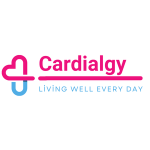Schlagwörter: Angioplasty, Atherosclerosis, Blood Flow, Leg Pain, PAD, PAD Prevention, PAD Recovery, PAD Symptoms, PAD Treatment, Peripheral Artery Disease
- Dieses Thema hat 0 Antworten sowie 1 Teilnehmer und wurde zuletzt vor vor 7 Monaten, 2 Wochen von
 Chester aktualisiert.
Chester aktualisiert.
-
AutorBeiträge
-
Dezember 16, 2024 um 2:52 pm Uhr #4195
 ChesterTeilnehmer
ChesterTeilnehmerPeripheral artery disease (PAD) is a common circulatory condition where narrowed arteries reduce blood flow to the limbs, typically the legs. PAD often signals a buildup of fatty deposits in the arteries, known as atherosclerosis, and can be a warning sign of more severe cardiovascular issues.
What Causes Peripheral Artery Disease?
– Atherosclerosis: The most common cause of PAD, where plaque buildup narrows and hardens the arteries.
– Smoking: A major risk factor, as it damages blood vessels and promotes plaque formation.
– Diabetes: High blood sugar levels can damage blood vessels, increasing the risk of PAD.
– High Cholesterol and Blood Pressure: Both contribute to arterial damage and plaque buildup.Common Symptoms of Peripheral Artery Disease
– Pain or cramping in the legs during walking or exercise, known as claudication.
– Numbness or weakness in the legs.
– Coldness in one leg compared to the other.
– Non-healing wounds or ulcers on the feet or toes.
– Shiny or discolored skin and slowed hair or nail growth on the affected limb.Did You Know? PAD affects approximately 8.5 million people in the United States, and many remain undiagnosed due to mild or no symptoms.
How Is Peripheral Artery Disease Diagnosed?
Doctors diagnose PAD using:
– Ankle-Brachial Index (ABI): A simple, non-invasive test comparing blood pressure in the ankle and arm.
– Ultrasound Imaging: To identify narrowed or blocked arteries.
– Angiography: Uses contrast dye and X-rays or MRI to visualize blood flow.Treatment Options for Peripheral Artery Disease
– Lifestyle Changes: Quitting smoking, maintaining a healthy weight, and regular exercise can significantly improve symptoms.
– Medications: Cholesterol-lowering drugs, antiplatelet agents, or medications to improve blood flow.
– Angioplasty and Stenting: A minimally invasive procedure to open blocked arteries and place stents.
– Surgery: In severe cases, bypass surgery reroutes blood flow around a blocked artery.Prevention Tips for Peripheral Artery Disease
– Avoid smoking and excessive alcohol consumption.
– Adopt a heart-healthy diet rich in fruits, vegetables, and whole grains.
– Manage chronic conditions like diabetes, high cholesterol, and hypertension effectively.
– Stay active with regular aerobic exercises like walking or cycling.Inspiring Example
John, a 60-year-old retired teacher, experienced leg pain for years before being diagnosed with PAD. After making lifestyle changes and undergoing angioplasty, he regained his mobility and now advocates for early detection of PAD. -
AutorBeiträge
- Du musst angemeldet sein, um auf dieses Thema antworten zu können.